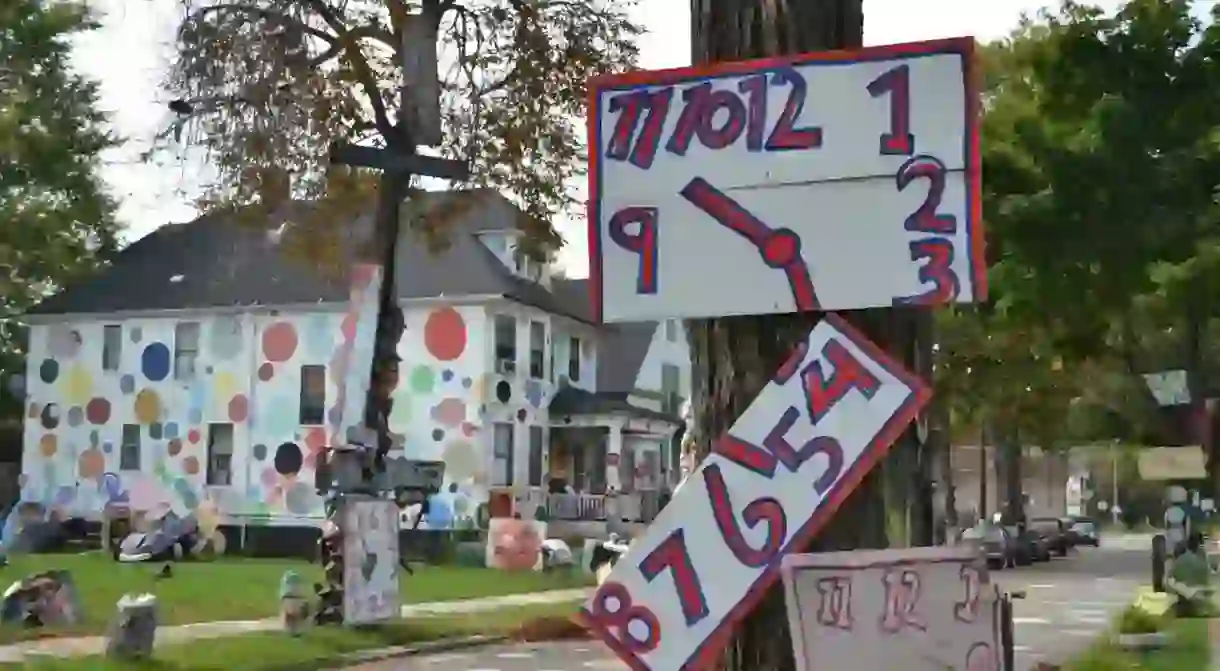Meet Tyree Guyton, the Artist Behind Detroit’s Heidelberg Project

Using repurposed urban detritus and his own colorful disposition, local artist Tyree Guyton turned an ordinary Detroit street into an art installation that has become a global attraction. Now, after 30 years of developing and maintaining the Heidelberg Project, Guyton is dismantling it piece by piece and stepping away, a process he believes is necessary for the next stage of its evolution. Culture Trip caught up with him to reflect on the history of the project, the story behind Heidelberg 3.0, and what’s next for this Detroit icon.

After so many years of dedication, Guyton’s announcement that the Heidelberg Project as we know it would be dismantled in order to make way for something called “Heidelberg 3.0” certainly came as a surprise. Guyton started the project in 1986, shortly after returning to the street he grew up on, after having been away serving in the army. He was shocked at the level of physical deterioration and the problems afflicting residents, and he took it upon himself to do something about it. Clearing and cleaning the street and its vacant lots led to the first found object installations, and he soon began brightening it up further with his paintbrush.
It hasn’t been an easy ride, particularly in the early days, with the city, police, and locals all opposed to the project at different times. But with the Heidelberg Project now a well-established Detroit landmark, the decision to overhaul raises a lot of questions about what the future will hold for Guyton, the project, and the neighborhood.
How do you feel about the project 30 years after it began?
I’m more excited now because I have 30 years under my belt. The best is yet to come.
In terms of personal goals for the project, what achievements are you most proud of?
Two honorary doctorates, visitors from over 144 countries and the fact that I have started an art movement in Detroit that is being heard around the world.
Are there goals that have you not been able to accomplish yet?
For 31 years we have been trying to purchase the 48 lots that we have been maintaining so that we can move to the next phase of the project. Although our work has continued these 30 years, we can move the process along much quicker when we have land ownership.

No other names are really associated with the project, what role have other people played in the project over the years?
The HP was started by me 30 years ago. This is the street where I was born and raised. The Polka Dot House has been in my family since 1947, so I have intimate ties to this area. Throughout the years, I have invited other artists to participate by creating various installations. Also, many children (who are now grown) participated in various activities and installations. The project is a gift to the community, but the upkeep and maintenance have been the responsibility of the HP.
What can you tell us about Heidelberg 3.0?
What I can tell you is that I have laid the foundation for something even greater and I have turned the new vision over to Jenenne Whitfield. As the first and only CEO, she will take the project to the next level.
What made you decide to go in a new direction with the project after so long?
Changing with the times and my own mortality. I have given 31 years of my life to my city and this community. Change is exciting and keeps me thinking!

Have you met with resistance over your idea to dismantle the project?
In ways that you can’t believe! People are saying things like “this is authentically Detroit, my children grew up watching you, the HP is important to Detroit, etc.” I admit this makes it somewhat difficult, but people don’t really understand that the dismantling process is also a work of art. I want to see it from both sides.
Has it been hard dismantling longstanding work?
Imagine an elevator with 30 floors with me traveling up for 30 years. As I come down, I’m stopping on every floor. What this means is that the dismantling process is just that, a process. Dismantling the HP is also a work of art in reverse! Several works will go to museums and travel the country. It’s a very thoughtful process for me, and it will take time.
Do you ever see yourself walking away from it?
Heidelberg is in my DNA, but nothing lasts forever. The foundation has been laid, the roots are deep, and the HP will continue beyond me.
What ambitions do you have away from the project?
So many. For years, I have been invited to other places to execute new projects and works so I am excited to do other things. Currently, I am working on a project in Philly’s Kensington community, an area riddled with a heroin epidemic.

How do you feel about the city of Detroit as a whole in 2017?
I see the city of Detroit on the move, but it has great challenges with balancing the playing field. However, my MO is to stay focused and to do my part to contribute to the growth and resurgence of the city where I was born and raised.













